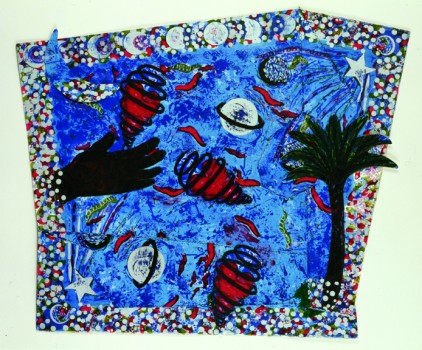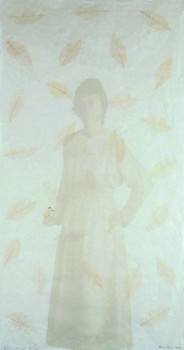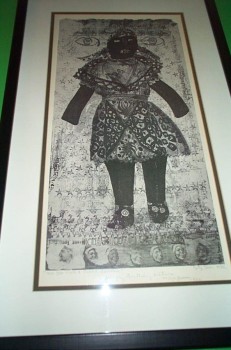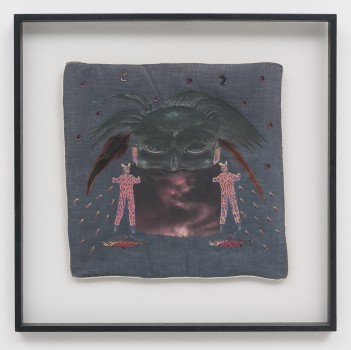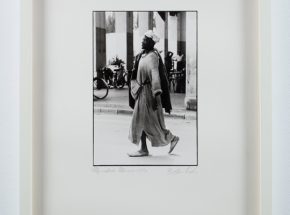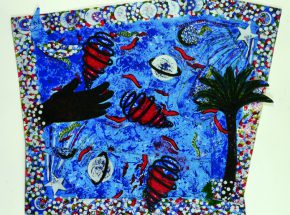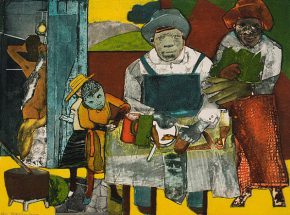
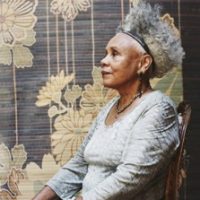
Betye Irene Saar is an American artist, known for her work in the field of assemblage. Her education included a time at the University of California, Los Angeles, from where she received a degree in design in 1949, and graduate studies in printmaking and education at Pasadena City College, California State University, Long Beach, from 1958 to 1962. Her interest in assemblage was inspired by a 1968 exhibition by Joseph Cornell, though she also cites the influence of Simon Rodia’s Watts Towers, which she witnessed being built in her childhood. She began creating work typically consisting of found objects arranged within boxes or windows, with items drawing on various different cultures reflecting Saar’s own mixed heritage (African, Native American, Irish and Creole).
In the late 1960s Saar began collecting images of Aunt Jemima, Uncle Tom, Little Black Sambo, and other stereotyped African American figures from folk culture and advertising. She incorporated them into collages and assemblages, transforming them into statements of political and social protest. In the 1970s Saar shifted focus again, exploring ritual and tribal objects from Africa as well as items from African American folk traditions. In new boxed assemblages, she combined shamanistic tribal fetishes with images and objects intended to evoke the magical and the mystical.
When her great-aunt died, Saar became immersed in family memorabilia and began making more personal and intimate assemblages that incorporated nostalgic mementos of her great aunt’s life. She arranged old photographs, letters, lockets, dried flowers, and handkerchiefs in shrinelike boxes to suggest memory, loss, and the passage of time.
In the early 1980s Saar taught in Los Angeles at the University of California and the Otis Art Institute. In her own work she began using a larger, room-size scale, creating site-specific installations, including altar-like shrines exploring the relationship between technology and spirituality, and incorporating her interests in mysticism and Voodoo. Pairing computer chips with mystical amulets and charms, these monumental constructions suggested the need for an alliance of both systems of knowledge: the technical and the spiritual.
Saar was a part of the black arts movement in the 1970s, challenging myths and stereotypes. In the 1990s, her work was politicized while she continued to challenge the negative ideas of African Americans. One of her better-known and controversial pieces is that entitled “The Liberation of Aunt Jemima.” It is a “mammy” doll carrying a broom in one hand and a shotgun in the other, and placed in front of the syrup labels. Her work began with found objects arranged in boxes or windows. The items would reflect her mixed ancestry.
Her ancestry is a mixture of African-American, Irish, and Native American. She married a white ceramist and conservator.
Betye Saar conttinues to live and work in Los Angeles. Saar is the mother of two artists, Alison Saar and Lezley Saar.
She has been awarded honorary doctorate degrees by [[California College of Arts and Crafts]], California Institute of the Arts, Massachusetts College of Art, Otis College of Art and Design, and San Francisco Art Institute.
www.en.wikipedia.org/wiki/Betye_Saar
Website
http://www.betyesaar.net

